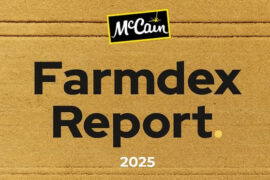The Washington, DC-headquartered National Restaurant Association on February 1 released its 2022 State of the Restaurant Industry report, which measures the industry’s continued recovery in the United States and examines the status of current and emerging trends across key categories including technology and off-premises business, operations, workforce, food and menus, and more.
Key findings illustrating how the restaurant industry continues to recover from the deep downturn of shutdowns and other negative fallout from the coronavirus (SARS-Cov-2) pandemic include:
•The foodservice industry is forecast to reach $898 billion in sales in 2022.
•The workforce is projected to grow by 400,000 jobs, for total industry employment of 14.9 million by the end of 2022.
•More than half of restaurant operators said it would be a year or more before business conditions return to normal. Food, labor, and occupancy costs are expected to remain elevated, and continue to impact restaurant profit margins in 2022.
•Ninety-six percent of operators experienced supply delays or shortages of key food or beverage items in 2021 – and these challenges will likely continue in 2022.
•Fifty-one percent of adults say they aren’t eating at restaurants as often as they would like, which is an increase of six percentage points from before the pandemic.
“The restaurant and foodservice industry has adapted and is carrying on with absolute resilience, so we’re optimistic about the path toward recovery in the coming year,” said Marvin Irby, interim president chief executive officer of the National Restaurant Association. “We still have work to do to ensure that those operators struggling the most can survive. Our Association will continue to champion the necessary government support needed at the federal and local levels to help keep these businesses – cornerstones of our communities – on a path to better days.”

Off-Premises Dining Enhanced by Improved Technology
A few years ago, restaurants couldn’t have managed the level of off-premises demand during the pandemic. Technological advances are becoming table stakes for this long-term business channel, with more than eight in 10 operators saying the use of technology in a restaurant provides a competitive advantage, and a good proportion of operators plan to ramp up investments in technology this year. Many will devote resources to online or app ordering, reservations, mobile payment or delivery management, in addition to back-of-the-house technology. This is validated by a large number of consumers preferring the use of technology as long as it doesn’t diminish hospitality.
The past year has also continued to drive consumer demand for alcohol to-go and outdoor dining with nearly four in 10 consumers saying the availability of outdoor seating would make them more likely to choose one restaurant over another similar one. Other operational takeaways include:
•Fifty-four percent of adults say purchasing takeout or delivery food is essential to the way they live, including 72% of Millennials and 66% of Gen Zers.
•Roughly half of US restaurant operators think the availability of seating on a sidewalk, parking lot or street will become more common within their segment this year.
•Seventy percent of Gen Z respondents (age 21+) and 62% of Millennials say the option of including alcohol with a takeout or delivery order would make them more likely to choose one restaurant over another similar restaurant.
Help (Still) Wanted Throughout the Restaurant Industry
While the restaurant and foodservice industry in the United States added back 1.7 million jobs during 2021 for an end-of-year total of 14.5 million employees, many restaurants remain severely understaffed, and this will continue to constrain industry growth in 2022.
Despite some gains, 7 in 10 operators across all major segments say their restaurant currently does not have enough employees to support customer demand and most operators expect their labor challenges to continue through next year. Key figures on the restaurant workforce include:
•Roughly 50% of operators in the full service, quick service, and fast-casual segments expect recruiting and retaining employees to be their top challenge in 2022.
•Between 2023 and 2030, the industry is projected to add an average of 200,000 jobs each year, with total staffing levels reaching 16.5 million by 2030.
•Seventy-five percent of operators said they plan to devote more resources to recruiting and retaining employees.
Streamlined Menus with More Plant-Based Options and Sustainable Packaging
Wellness has gained mind share, with chefs ranking food believed to boost immunity and plant-based sandwiches highly in a list of Top 10 Trends for 2022. Sustainable, quality- and temperature-retaining packaging options also reign in 2022 as operators continue working to provide the best possible off-premises experience for customers. Meanwhile, restaurant menu offerings remain scaled back compared with pre-pandemic levels due to supply delays or shortages of food and beverage items, and elevated food costs. Key data points on food and beverage trends include:
•Eighty-eight percent of adults (including 94% of Millennials) say they would be likely to try ordering an expanded variety of food items for takeout or delivery if the restaurant used packaging that helps the food maintain the same temperature, taste and quality as when it’s served in the restaurant.
•Six in 10 full service operators say their menu contains fewer offerings now than it did before the coronavirus pandemic.
•Fifty-seven percent of adults say they would likely participate in a meal subscription program if it was offered by one of their favorite restaurants. Eight in 10 Millennials and Gen Z adults say they would use this option.
“Restaurants and their patrons have found themselves in a ‘new normal.’ Given emergent technology, changing consumer behavior and dining preferences, and the extraordinary challenges of the last two years, the industry is unlikely to ever completely return to its pre-pandemic state,” said Hudson Riehle, senior vice president of the Research and Knowledge Group at the National Restaurant Association. “While recovery speed varies across the industry by segment, the constant innovation and sustained flexibility of restaurant operators are creating a new future for the restaurant industry. There will continue to be ample opportunities for growth in 2022 and beyond.”





